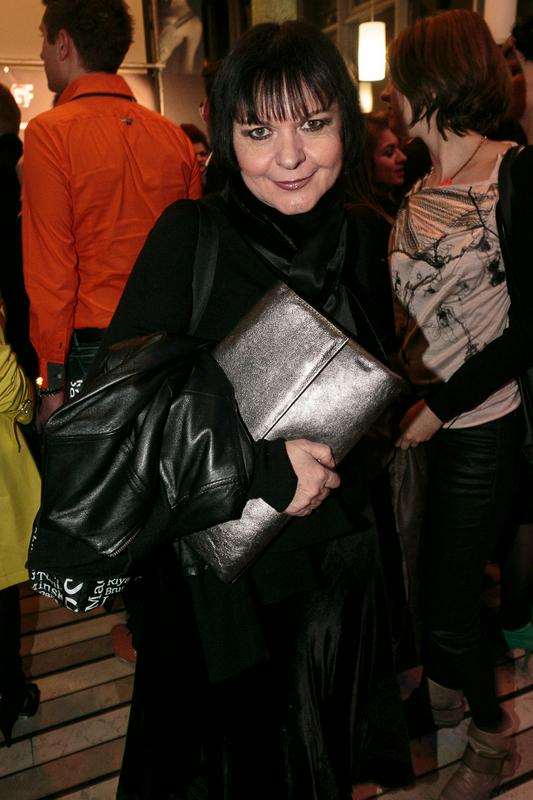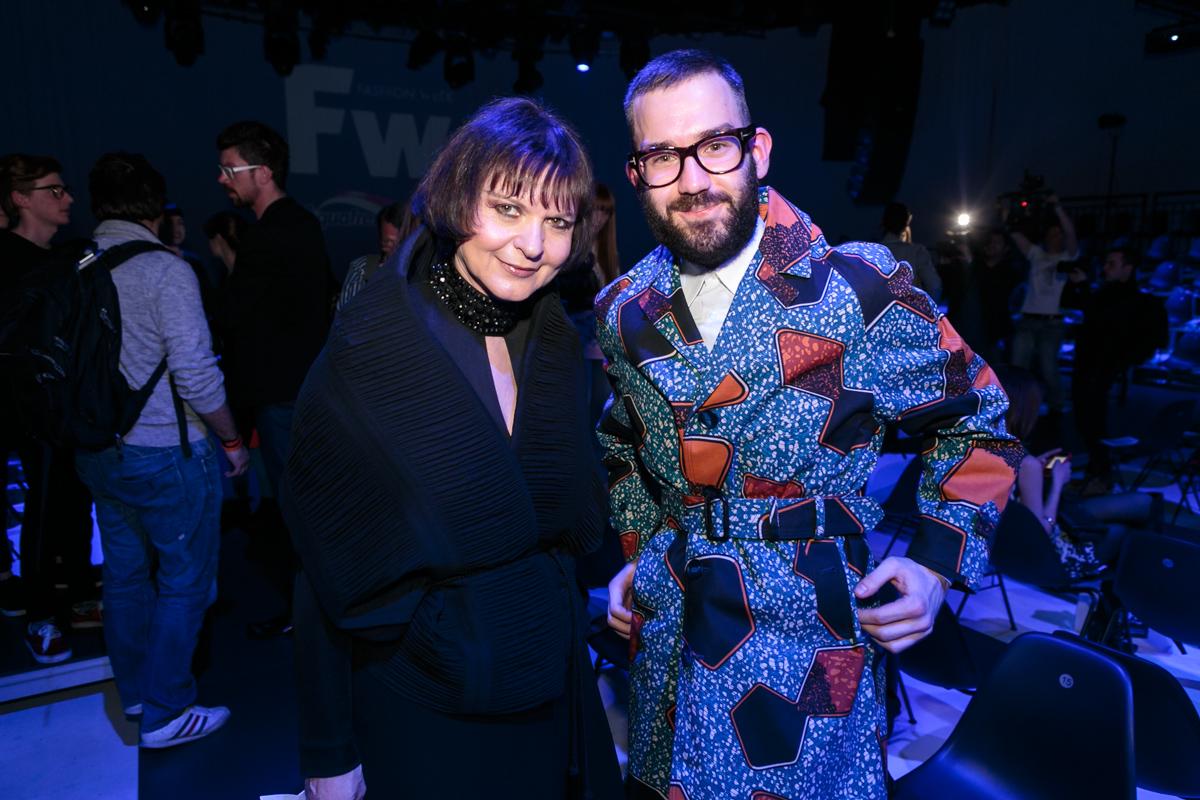
The fact is that trend recognition is not easy to achieve given that its themes cover many areas, actually all the relevant areas of contemporary visual culture.
Of course, that would have been much easier to achieve in an economic boom. It is also true that this is a long and complex process, but Slovenian companies had ample time for gradual adjustment. Their failure to act can largely be attributed to non-professional leadership and management personnel stuck in the bygone “industrial” modus operandi instead of embarking on creativity.
It is truly unbelievable how much still needs to be done to get Slovenian companies to actually understand creative design processes and make use of them in their development. This may seem like a simple task, but it is in fact huge, even epic.

Jožica Brodarič never lacks the inspiration for daily creativity. A youthful, trendsetting woman with rich experience in various creative areas in Slovenia. Her top-down perspective has made her a fashion guru in Slovenia. Jožica Brodarič founded the Trend Awards for Visual Creativity, so our interview began with this topic. And concluded with personal style. A style unique to Jožica and impossible to ignore.
You initiated the Trend Awards more than ten years ago. Have they achieved their purpose?
I founded the Trend Awards for Visual Creativity sixteen years ago. They have become well-established and valued. I believe them to be well situated in Slovenia owing to their underlying competency and very high standards. The fact is that trend recognition is not easy to achieve given that its themes cover many areas, actually all the relevant areas of contemporary visual culture. We really extract the best of the best as the expert commission only awards a limited number of awards and considers not only the best achievements in industrial, product, graphic and fashion design but also in architecture, contemporary art, costume and stage design, photography, illustration, comics and new media.
Can you say a few words about the publication of Trend, which you prepare yourself?
Trend is published once a year to document the Trend Awards. It presents all current award winners and their works and also features other top quality visual production of the current year. It is issued in hardcover and for the last two years also in English. It is ranked among the most prestigious publishing projects in Slovenia.
You once said that it is the mission of the Trend Awards to evaluate, award and promote the outstanding achievements of Slovenian authors engaged in a broad spectrum of visual creativity. On whom would you cast the spotlight this year?
I would like to acknowledge all four winners of the Trend Award for Visual Creativity this year: the innovative knitwear fashion designers Urška and Tomaž Draž, set designer Branko Hojnik, the Slovenian photographer living in France Klavdij Sluban, and Gigodesign Agency. And of course, the famous avant-garde group OHO, which was awarded this year’s lifetime achievement award.
Is Slovenia a trendy country in design, and I am referring here to visual as well as industrial and fashion design?
Slovenia is rather contradictory in this respect. We still have “classical” industrially-oriented old-style companies that neither understand design as one of the key factors in value added nor apply it. We can also say that there are hardly any companies left as the big ones from the textile, footwear, wood, and similar sectors systematically went bankrupt in the last two decades, one after another. But then there are also many young and promising designers and other creative professionals with fresh innovative ideas who are educated in Slovenia and abroad but then their potential is left to hang in the relatively static environment of Slovenia’s barely emerging creative industries.
Nonetheless, let me ask – what are Slovenia’s stronger points? In the past, industrial design flourished with the designer and architect Niko Kralj, Jože Plečnik was a renowned architect, Slovenians used to take pride in Mura products. Do you now see any such potential?
Let me first mention Niko Kralj and applaud the investors who have begun to revitalise the late architect’s furniture portfolio and endeavour to make his timeless designs available in the future. And a number of prominent names have emerged. We have a long list of internationally comparable and relevant architectural firms, such as Sadar Vuga, Bevk Perović, Dekleva Gregorič, to name only some. We can also boast of some very agile and, in terms of design, “long-established” companies, such as Elan, Gorenje, Akrapovič, Adria Mobil and some others. There are also numerous excellent individual graphic, fashion and industrial designers, top-level illustrators and other creators in Slovenia, but they are scattered around, left to themselves and lacking any real opportunities to make a major breakthrough. Except for those who make a breakthrough outside our country – and in this area Slovenia is surprisingly strong. Here, I must note some of the Slovenian creators who are very successful in the international arena: fashion designer Nataša Čagalj, jewellery designer Lara Bohinc, industrial designer Nika Zupanc, sail boat designer Dan Lenard, and car designer Robet Lešnik, to mention only the most prominent.
Would you say that Slovenian companies have recognised the importance of design and started to invest in it?
Some already have and are now trying to make up for lost time by taking the right steps. But there are too few. It is truly unbelievable how much still needs to be done to get Slovenian companies to actually understand creative design processes and make use of them in their development. This may seem like a simple task, but it is in fact huge, even epic. It is not only about the “restructuring of companies”, which has become a handy phrase for economists and managers. Everybody knows what needs to be done, but the crucial question is how to tackle it all. How to change attitudes toward design? How to change the deep-rooted opinion that design is nothing but an expense or at most an option? In doing so, some taboos that prevail across Slovenia’s economy must be broken. For example, the taboo against “foreign” management boards, entailing the recruitment of international managers if needed. Or the inclusion of “art directors” on management boards – it is rather shocking that the majority of Slovenian companies have never had and still do not even recognise the business role of a creative director.
As a creative manager you offer advice to some Slovenian companies on the development of their trademarks. Are these companies engaged in fashion or in some other industries?
Less and less in fashion as there are hardly any fashion companies left. I have otherwise provided advice to a range of companies stretching form the textile, leather and wood sectors, to the glassmaking and even commercial sales sectors.
How important is the creative industry to Slovenia?
Former British Ambassador to Slovenia Andrew Page, who was a guest of honour at the Trend Awards ceremony three years ago, mentioned that the creative industries contribute almost 6% of total UK gross domestic product and directly and indirectly employ more than two million people. I have not come across any such data for Slovenia and I am not even sure that we know how to measure this contribution. Anyway, we should start to measure and evaluate it as soon as possible, set realistic goals and establish a system to achieve them.
Consumerism brings with it a substantial environmental footprint. Are the designers and companies you cooperate with aware of this issue?
Increasingly so as various factors (media, education) have triggered a growing awareness of ecology and the importance of sustainable development. Fortunately, the European legislation in this area is rather progressive and also strict.
Why have Slovenian companies such as Mura, Alpina, Peko, and the wood industry seen a downfall or have just been treading water?
Because of the lost opportunities in the past. They were unsuccessful in developing long-term strategies early enough, they did not establish their individuality or create their own trademarks, they found no appropriate niches, and failed to actively enter various markets. To put it bluntly – because they have never managed to free themselves from the grip of manufacturing. Of course, that would have been much easier to achieve in an economic boom. It is also true that this is a long and complex process, but Slovenian companies had ample time for gradual adjustment. Their failure to act can largely be attributed to non-professional leadership and management personnel stuck in the bygone “industrial” modus operandi instead of embarking on creativity.
Many Slovenian designers with potential moved on to work abroad. You are familiar with this scene – are there any opportunities for them to return and link Slovenian industry with renowned designers?
It is awkward, unrealistic and unjust to expect those who have succeeded abroad to return now. Where should they return to, and to what? If I may be forgiven some cynicism, Slovenian companies are not really plying them with offers. One of the successes is Nataša Čagalj, who returned to Slovenia after an outstanding international career (she worked as a designer and creative director for Cerruti, Lanvin, Max Mara, Stella McCartney and other leading fashion brands). But after two years in Slovenia she gave up to a large extent and went back to London.
You also won the award for best personal style. Does a good personal style entail knowledge of trends or consistency with one’s character and physical appearance?
Everything you mention is important. And it doesn’t hurt if one has sufficient confidence and courage, refined personal aesthetics, the ability to creatively combine elements, a touch of rationality and ample information.
Tanja Glogovčan, SINFO
The fact is that trend recognition is not easy to achieve given that its themes cover many areas, actually all the relevant areas of contemporary visual culture.
Of course, that would have been much easier to achieve in an economic boom. It is also true that this is a long and complex process, but Slovenian companies had ample time for gradual adjustment. Their failure to act can largely be attributed to non-professional leadership and management personnel stuck in the bygone “industrial” modus operandi instead of embarking on creativity.
It is truly unbelievable how much still needs to be done to get Slovenian companies to actually understand creative design processes and make use of them in their development. This may seem like a simple task, but it is in fact huge, even epic.


































































